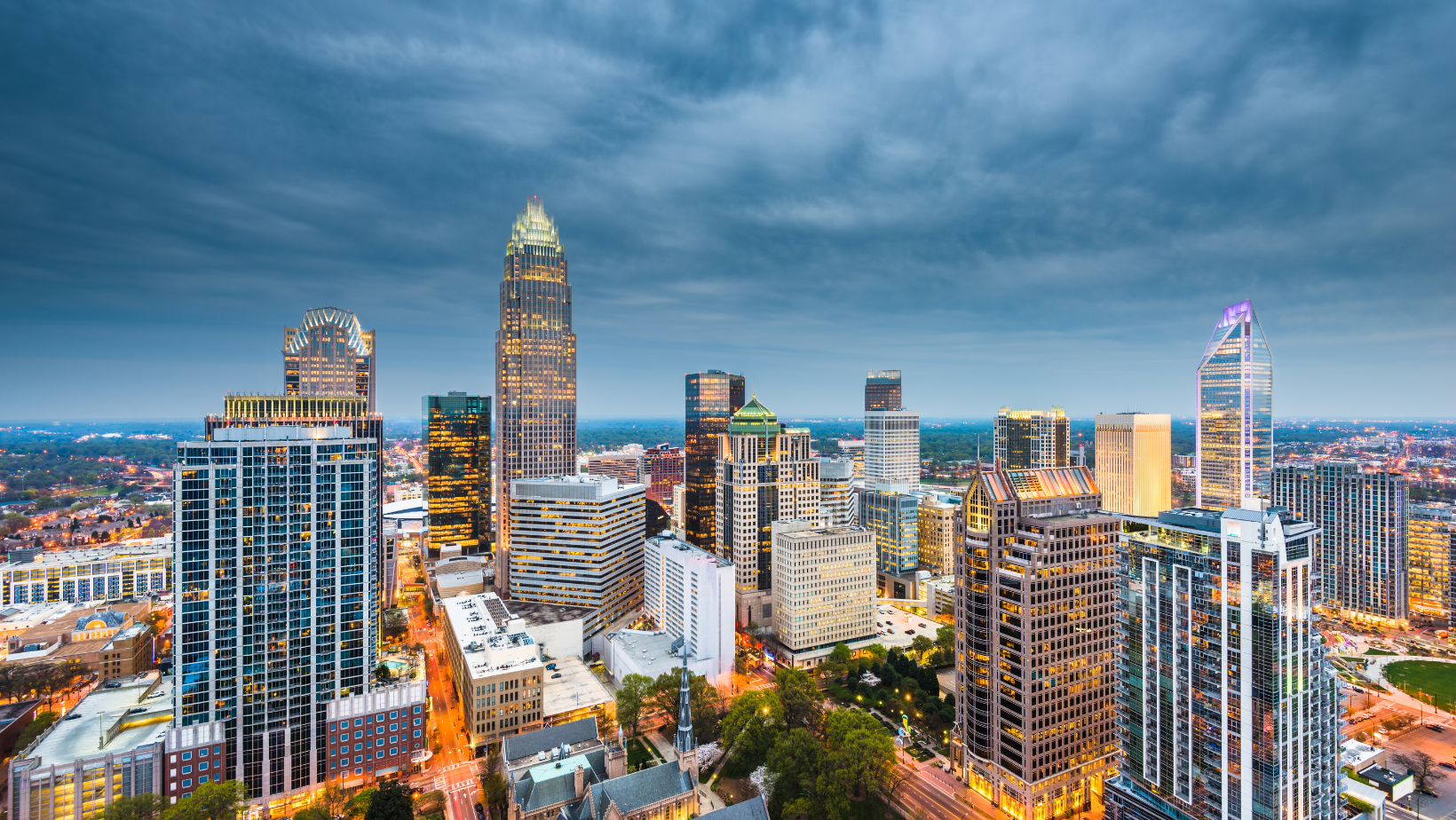Charlotte, North Carolina is no longer just a hidden gem — it’s now one of the fastest-growing cities in the country. But just how fast is this booming Southern hub growing?
Two numbers keep showing up in news articles and local reports:
👉 157 people per day – per the Charlotte Regional Business Alliance
👉 214 people per day – according to the UNCC 2025 State of Housing Report (based on 2024 data)
So… which number is right? And why does it matter — especially if you’re thinking of buying, selling, or investing in Charlotte real estate?
Let’s break it down.
The Queen City’s Population Surge: What's Behind the Numbers?
Charlotte has been climbing the population charts for years, drawing newcomers with its job opportunities, vibrant culture, and still-affordable real estate market (though that’s changing quickly).
But when it comes to daily growth, the stats seem to vary depending on who’s reporting.
🔹 Report #1: Charlotte Regional Business Alliance – 157 People/Day
This figure, widely cited in economic and real estate circles, is based on long-term migration and census trends. The Charlotte Regional Business Alliance pulled from several years of metro-wide data to land on 157 daily new residents — a strong growth number by national standards.
🔹 Report #2: UNCC 2025 State of Housing – 214 People/Day (2024 Data)
Then came the 2025 State of Housing in Charlotte Report, published by the University of North Carolina at Charlotte. Based on 2024 migration and housing data, it found that 214 people were moving to Charlotte every day — a significant jump from previous estimates.
So, what gives?
Why the Numbers Don’t Match (But Both Are Right)
It all boils down to timing, methodology, and scope.
| Source | Daily Influx | Based On | Year/Context |
|---|---|---|---|
| Charlotte Regional Business Alliance | 157/day | Rolling regional average | Multi-year average up to 2023 |
| UNCC 2025 Report (2024 data) | 214/day | Recent housing and migration trends | Data from 2024, published in 2025 |
While one uses a broad, historical lens, the other focuses on recent post-pandemic trends that saw a sharp rise in relocations to Charlotte.
So, in short? Charlotte’s growth is accelerating, and both figures reflect different snapshots in time.
Why People Are Flocking to Charlotte
Charlotte’s appeal isn’t a mystery to locals — but if you’re new to the area or considering a move, here’s what’s drawing in hundreds of new residents daily:
💼 Strong Job Market
Second-largest banking hub in the U.S.
Growing sectors: finance, healthcare, tech, logistics, energy
Remote work has opened up options for out-of-state professionals
💰 Relatively Affordable Cost of Living
Compared to cities like New York, San Francisco, or even Atlanta, Charlotte still offers:
Lower housing prices
Favorable taxes
More square footage for the dollar
🌇 Lifestyle & Location
Urban amenities + suburban comforts
2 hours to the mountains, 3.5 to the beach
Sports, arts, breweries, and greenway trails galore
🏡 Real Estate Market Still Has Room to Grow
Despite rising prices, Charlotte remains attractive to:
First-time homebuyers
Out-of-state investors
Empty nesters looking to downsize
Real Estate Impacts: What This Means for Buyers & Sellers
As someone working in the Charlotte real estate market, you probably already feel the shift. But here’s a quick breakdown of how this growth translates to the housing scene:
For Buyers:
Competition is heating up — homes in popular neighborhoods go fast
Inventory remains low, especially for entry-level price points
Home values continue trending upward, creating long-term equity potential
For Sellers:
High demand = faster sales, often above asking price
Out-of-state buyers are bringing cash and flexibility
Great time to list if you're upgrading, downsizing, or relocating
For Investors:
Charlotte is becoming a rental hotspot
Strong ROI potential in up-and-coming neighborhoods
Increased demand for multi-family and build-to-rent communities
Growing Pains: What’s Charlotte Dealing With?
No city grows this fast without facing a few bumps along the way. Here are some key challenges:
🏘️ Housing Affordability
Prices are up over 30% since 2020
Affordable housing inventory is low
Renters also face rising costs
🚧 Infrastructure Strain
Traffic congestion in key corridors
Public transportation expansion underway, but slow
Schools and city services catching up with population growth
🌳 Balancing Growth with Livability
More developments, but less green space in some areas
Long-term planning efforts are in motion (like the 2040 Charlotte Future Plan)
FAQs: Charlotte’s Daily Growth
Q: Is Charlotte growing faster than other U.S. cities?
Yes — Charlotte regularly ranks in the top 10 nationally for net migration and population growth.
Q: Where are most new residents coming from?
Common inbound states: New York, California, Florida, and Texas.
Q: Are there specific Charlotte neighborhoods seeing more growth?
Yep — South End, NoDa, Plaza Midwood, Steele Creek, and Ballantyne are hot. But even outer-ring suburbs like Concord, Matthews, and Huntersville are seeing rapid expansion.
Q: What does this mean for property values long-term?
Growth typically drives appreciation. If trends continue, Charlotte real estate remains a smart long-term investment.
Wrapping Up: Charlotte’s Growth Is Just Getting Started
Whether it’s 157 or 214 new people a day, one thing’s crystal clear — Charlotte is booming. And as real estate professionals, buyers, and sellers, understanding these trends can help you make more informed decisions.
The demand is real. The market is moving. And Charlotte? It’s only just warming up.
Helpful Resources


